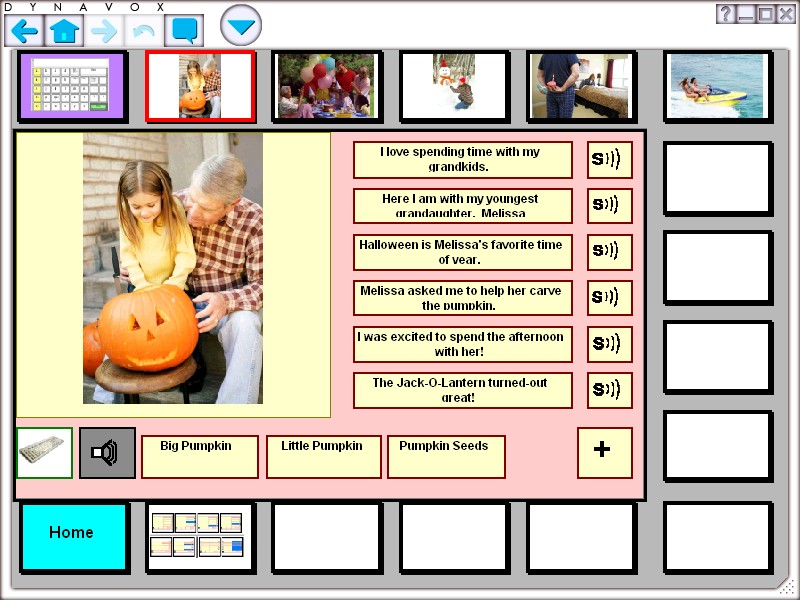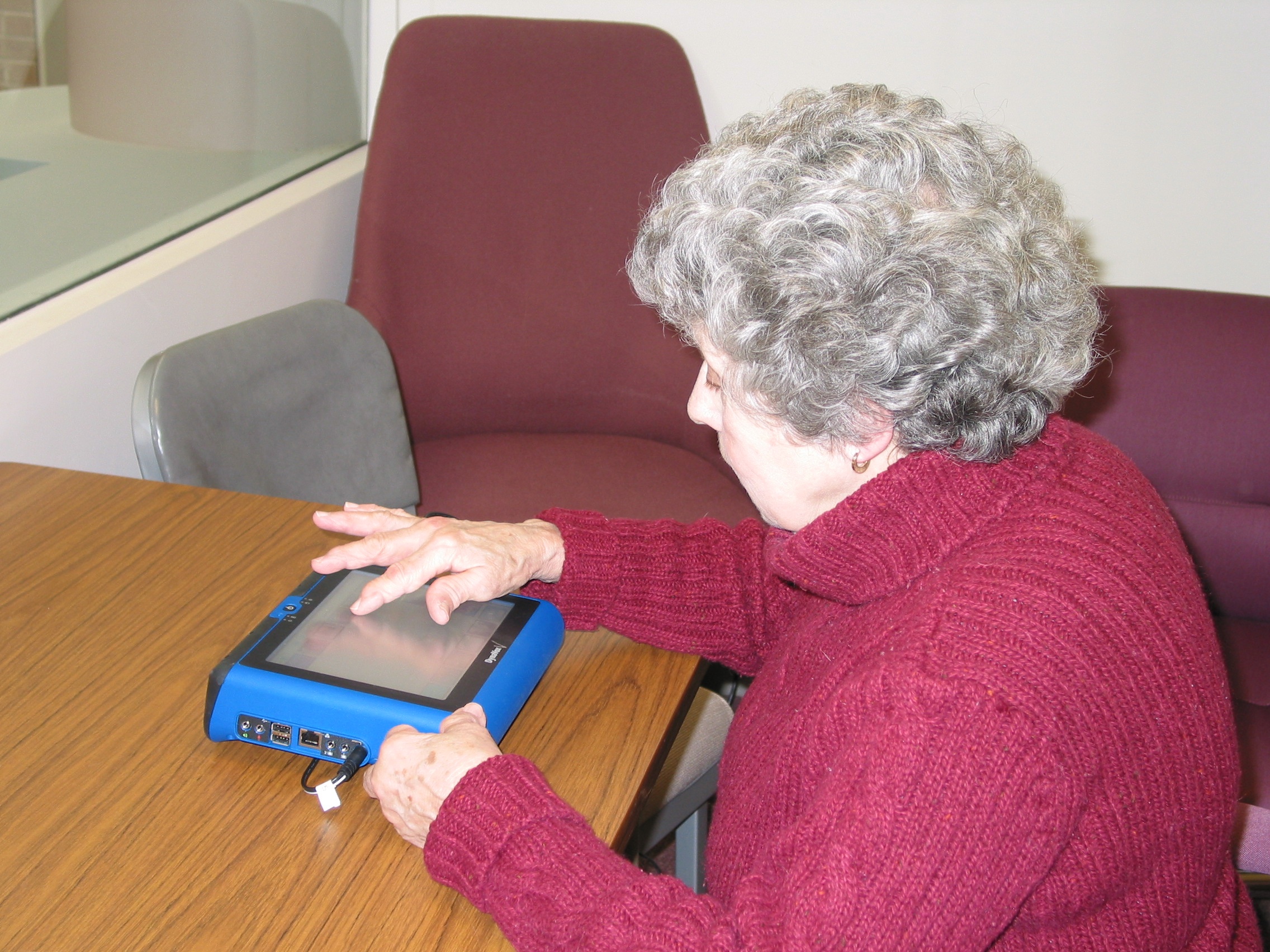
Goals
The goals of this project are:
- To investigate the image of personal and contextual relevance of images on the communication performance of adults with acquired aphasia
- To develop AAC prototypes involving the use of graphic, digital images to represent meaning and support interface navigation.
- To evaluated communication effectiveness of persons with severe aphasia who use these AAC prototypes.

Progress to Date
Research: The impact of personal and contextual relevance on language and communication was investigated through a series of studies, some of which are ongoing.
Prototype Development: A series of Visual Scene Display prototype were developed and evaluated.
Low technology Visual Scene templates were developed and made available at no cost at http://aac.unl.edu.
Technology Transfer: The Visual Scene Display for Adults Application (Version 1) was released by Dynavox Technologies during the spring of 2007. It is available in V and Vmax devices. Dynavox Technologies was the corporate partner for this project. Many other AAC manufacturers included contextual scene capability in their products during the past year.
Next Steps
Research is going to evaluate the impact of low tech visual scenes on the communication performance of persons with severe aphasia.
Additional research on the impact of the extent of personalization and contextual on language and communication performance.
The Visual Scene Display for Adults application continues to be revised as a result of field tests with people with chronic, severe aphasia.
Webcast
Publications
Dietz, A., McKelvey, M. & Beukelman, D. (2006). Visual scene displays (VSD): New AAC interfaces for persons with aphasia. Perspectives on Augmentative and Alternative Communication. 15, 13-17.
Weissling, K. & Beukelman, D. (2006). Visual scene displays: Low tech options. Perspectives in AAC, 4, 15-17.
Beukelman, D., Dietz, A., McKelvey, M., Hux, K., & Weissling, K. (2008-in press). Visual scene displays: AAC design specifications aimed at reducing the cognitive/linguistic load for people with chronic aphasia. Disability & Rehabilitation.
Dietz, A., Hux, K., & Beukelman, D. (2008-in press). Reading comprehension by people with chronic aphasia: A comparison of three levels of visuographic contextual support. Aphasiology.
Dietz, A., McKelvey, M., Schmerbauch, Weissling, K., & Hux, K. (2008-in press). Compensation for severe, chronic aphasia using augmentative and alternative communication. In S. Chabon & E. Cohn (Eds.), Communication Disorders: A Case Based Approach. Boston: Allyn & Bacon.
McKelvey, M., Hux, K., Dietz, A., Beukelman, D. (2008-Submitted). Impact of personal relevance and contextualization on comprehension by people with chronic aphasia. American Journal of Speech Language Pathology.
Presentations
Weissling, K., Beukelman, D., Fager, S., & Wyss, J. (2006). Creating low-tech visual scenes communication books for people with aphasia. American Speech Language Hearing Association Convention
Dietz, A., McKelvey, M., Hux, K., & Beukelman, D. (2006). Integrating contextual relevant visual scenes into aphasia interventions. American Speech Language Hearing Association Convention, ASHA, 156.
Dietz, A., Hux, K., Beukelman, D., & McKelvey, M. (2008). The impact of visuographic support on reading comprehension by people with chronic aphasia. American Speech Language Hearing Convention.
Dietz, A., Hux, K., Beukelman, D., & McKelvey, M. (2008). Reading comprehension by people with chronic aphasia: A comparison of three levels of visographic contextual support. Clinical Aphasiology Conference, Teton Village, WY
McKelvey, M., Dietz, A., Hux, K., Beukelman, D., Weissling, K., & Wallace, S. (2008). Information representation in augmentative and alternative communication systems for People with Severe Chronic Aphasia. International Society for Augmentative and Alternative Communication, Montreal, Canada.
McKelvey, M., Hux, K., Beukelman, D., & Diet, A. (2008). The impact of contextualization and personal relevance on the communicative performance by people with severe aphasia, Clinical Aphasiology Conference, Teton Village, WY.
McKelvey, M., Hux, K., Dietz, A., & Beukelman, D. (2008). Impact of personal relevance and contextualization on comprehension in aphasia. American Speech Language Hearing Convention.
Weissling K., McKelvey M., & Wallace, S. (2008). Aphasia therapy: Coordinating AAC and tradition. Nebraska State Speech, Language, Hearing Association.